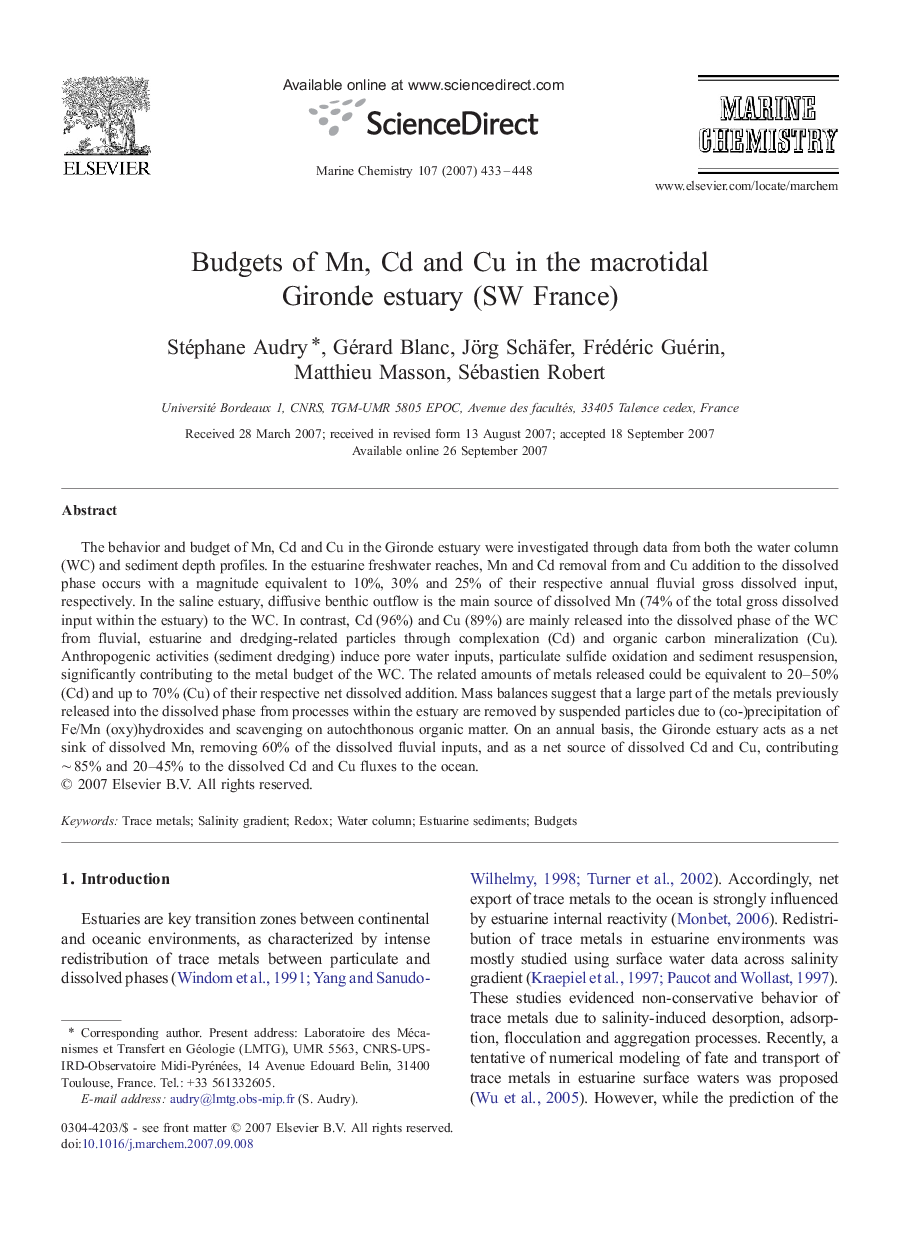| Article ID | Journal | Published Year | Pages | File Type |
|---|---|---|---|---|
| 1263248 | Marine Chemistry | 2007 | 16 Pages |
The behavior and budget of Mn, Cd and Cu in the Gironde estuary were investigated through data from both the water column (WC) and sediment depth profiles. In the estuarine freshwater reaches, Mn and Cd removal from and Cu addition to the dissolved phase occurs with a magnitude equivalent to 10%, 30% and 25% of their respective annual fluvial gross dissolved input, respectively. In the saline estuary, diffusive benthic outflow is the main source of dissolved Mn (74% of the total gross dissolved input within the estuary) to the WC. In contrast, Cd (96%) and Cu (89%) are mainly released into the dissolved phase of the WC from fluvial, estuarine and dredging-related particles through complexation (Cd) and organic carbon mineralization (Cu). Anthropogenic activities (sediment dredging) induce pore water inputs, particulate sulfide oxidation and sediment resuspension, significantly contributing to the metal budget of the WC. The related amounts of metals released could be equivalent to 20–50% (Cd) and up to 70% (Cu) of their respective net dissolved addition. Mass balances suggest that a large part of the metals previously released into the dissolved phase from processes within the estuary are removed by suspended particles due to (co-)precipitation of Fe/Mn (oxy)hydroxides and scavenging on autochthonous organic matter. On an annual basis, the Gironde estuary acts as a net sink of dissolved Mn, removing 60% of the dissolved fluvial inputs, and as a net source of dissolved Cd and Cu, contributing ∼ 85% and 20–45% to the dissolved Cd and Cu fluxes to the ocean.
